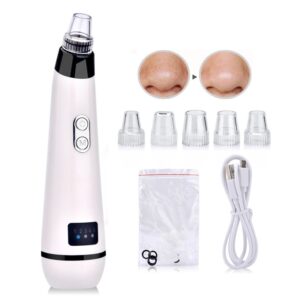Delivery Method: Via Email Reference #: 320-25-93 Product: Drugs Recipient:
Recipient Name
Mr. Norman Craig Delgado
Recipient Title
President and CEO
Oasis Medical, Inc.
514 S. Vermont Avenue
Glendora, CA 91741
United States
Issuing Office: Center for Drug Evaluation and Research (CDER)
United States
Warning Letter 320-25-93
July 15, 2025
Dear Mr. Delgado:
The United States Food and Drug Administration (FDA) inspected your drug manufacturing facilities, Oasis Medical, Inc., FEI 2083373, at 514 S. Vermont Avenue, Glendora, from January 15 to 27, 2025.
This warning letter summarizes significant violations of Current Good Manufacturing Practice (CGMP) regulations for finished pharmaceuticals. See Title 21 Code of Federal Regulations (CFR), parts 210 and 211 (21 CFR parts 210 and 211).
Because your methods, facilities, or controls for manufacturing, processing, packing, or holding do not conform to CGMP, your drug products are adulterated within the meaning of section 501(a)(2)(B) of the Federal Food, Drug, and Cosmetic Act (FD&C Act), 21 U.S.C. 351(a)(2)(B).
We reviewed your February 17, 2025 response to our Form FDA 483 in detail and acknowledge receipt of your subsequent correspondence.
During our inspection, our investigators observed specific violations including, but not limited to, the following.
1. Your firm failed to establish adequate written procedures for production and process control designed to assure that the drug products you manufacture have the identity, strength, quality, and purity they purport or are represented to possess (21 CFR 211.100(a)).
Your firm failed to ensure the use of reproducible manufacturing processes for the production of sterile ophthalmic drug products. You also lacked an ongoing program to establish stable manufacturing operations, monitor ongoing process control, and provide for consistent drug quality. For example,
- Your process lacked adequate control and is prone to producing an excessive number of defective units. A substantial portion of batches have been rejected, including total reject levels (b)(4) in a number of cases. Of special concern are the excessive number of defective products due to visible particulate contamination (e.g., recurring instances of levels greater than (b)(4)). Batches with very high defect levels were nonetheless distributed.
- You failed to establish and follow an adequate visual inspection program for the ophthalmic drugs manufactured by your firm.
There was no classification as to the severity of the defects (i.e., critical, major, minor) or limit for the number of defects allowed, if any.
- The most recently completed requalification study for your (b)(4) cycle was conducted in 2023 and inadequately considered potential changes from previous qualifications and the original validation. The 2023 requalification did not include an assessment of (b)(4) maintenance or changes to the drug product components.
- The maximum duration of the hold steps in your manufacturing process (e.g., extensive hold times prior to (b)(4)) has not been validated.
Your response fails to address your lack of process capability, and the overreliance on visual inspection in an attempt to remove excessive defective units from batches.
You do not commit to thoroughly investigate the root causes of the visible particulates and excessive occurrence of these critical defects. You also lack appropriate interim steps to prevent production of further batches from a low capability process while you make efforts to remediate it. In addition, the response lacks a commitment to address potentially contaminated products in distribution.
Regarding the visual inspection program, your response lacks a commitment to perform a comprehensive reassessment of this program.
Regarding production hold times, your response acknowledges that you have not performed validation of your hold steps. But you do not commit to validating all in-process hold times and include a date by which these studies will be completed.
Process validation evaluates the soundness of design and state of control of a process through its lifecycle. Each significant stage of a manufacturing process must be designed appropriately to ensure the quality of raw material inputs, materials, and finished drugs. Process qualification studies determine whether an initial state of control has been established. Successful process qualification studies are necessary before commercial distribution. Thereafter, ongoing vigilant oversight of process performance and product quality are necessary to ensure you maintain a stable manufacturing operation throughout the product lifecycle.
See FDA’s guidance document Process Validation: General Principles and Practices for general principles and approaches that FDA considers appropriate elements of process validation, at https://www.fda.gov/media/71021/download.
In response to this letter, provide:
- A detailed retrospective review and assessment of your (b)(4) program. The retrospective review and assessment should include all changes to the drug product, container closure system, and packaging (e.g., canula sheath); and an evaluation of changes to, and maintenance of, the (b)(4) equipment. If changes are identified, provide your plan to evaluate the safety and quality of distributed finished products that remain within expiry and a plan to ensure the safety and quality of your drug products until the (b)(4) process is successfully validated.
- Thorough investigation(s), including corrective actions and preventive actions (CAPA), regarding finished product batches manufactured and released for distribution despite high numbers of rejected units.
- Complete results of your examination of retains/reserve samples for all batches from January 2023 to present for defects, and any related investigation(s) and corrective actions.
- A list of all batches since January 1, 2023, to present, with the following information:
o Product name
o Batch number
o Date of manufacture
o Date of expiration
o Batch size (original quantity of theoretical syringes)
o Actual batch yield (number of pouched syringe units)
o Number of rejects due to particulates
o Number of rejects due to other defects (include the top 3 other defect types for each batch, beyond particulate defects)
o Percent yield - A remediation plan that better assures ongoing management oversight throughout the manufacturing lifecycle of all drug products. Provide a more data-driven and scientifically sound program that identifies sources of process variability, and assures that manufacturing (including both production and packaging) operations meet appropriate parameters and quality standards. This includes, but is not limited to, evaluating suitability of equipment for its intended use, ensuring quality of input materials, determining the capability and reliability of each manufacturing process step and its controls, and vigilant ongoing monitoring of process performance and product quality.
- A comprehensive, independent assessment and remediation plan for systems used in the visual inspection of sterile drugs for defects (including but not limited to particulate matter). The assessment should include adequacy of inspection methods, acceptance and rejection criteria, personnel training, supervision, equipment and personnel qualification, equipment maintenance, and the procedures governing them. Provide your detailed remediation action plan that includes dates by which each remediation activity will be completed, and provisions for periodic independent reassessment of the plan’s effectiveness.
- A detailed summary of your validation program for ensuring a state of control throughout the product lifecycle, along with associated procedures. Describe your program for process performance qualification (PPQ), and ongoing monitoring of both intra-batch and inter-batch variation to ensure a continuing state of control. Also, summarize the program for qualification of your equipment and facility.
- Timelines for completing further PPQ studies on remediated processes for marketed drug products for which a state of control has not been adequately established.
2. Your firm failed to thoroughly investigate any unexplained discrepancy or failure of a batch or any of its components to meet any of its specifications, whether or not the batch has already been distributed (21 CFR 211.192).
Your firm lacked meaningful investigations of failed sterility and bioburden test results. For example:
Sterility Failure
Your quality unit (QU) did not adequately investigate a failed sterility test result for your (b)(4) drug product, VISCO SHIELD Topical Drops, lot V0724N. Your external testing laboratory performs two sterility tests: one for the contents within the syringe and the other for the sterility of the syringe and cap primary packaging components. Your external testing laboratory reported a sterility failure for the syringe and cap portion of the testing. You concluded in NCR 24014 that, because the contaminant was found only on the syringe and cap and not the contents of the syringe, the likely root cause of the sterility failure was laboratory contamination due to excessive handling during the test. However, your contract testing laboratory’s investigation concluded that there was no laboratory error. You failed to resolve the conflicting root cause conclusions and did not extend your investigation to other potential sources of contamination or ensure it was of appropriate scope. Although the batch remained under your control, your QU had dispositioned this batch “USE AS IS” on September 30, 2024, to be distributed to the U.S. market.
In your response to the sterility failure, we acknowledge your intention to create a specific procedure to address external laboratory out-of-specification (OOS) investigations. However, your investigation failed to consider conditions that led to the sterility failure or determine potential root causes to ensure effective CAPAs were promptly initiated. Additionally, you do not adequately address the potential non-integrity failure mode of the packaged finished drug product (e.g., breach in packaging integrity following (b)(4)).
Bioburden OOS
Your firm did not adequately investigate your firm’s pre-sterilization bioburden results that exceeded their specifications ((b)(4)) for VISCO SHIELD Topical Drops, lot V0724G. One sample exceeded the specification for the aerobic plate count test with a result of 570 CFU/sample and another sample exceeded the specification for the yeast and mold count test with a result of 334 CFU/sample.
In your response to the bioburden OOS, your investigation fails to consider the conditions that led to the OOS. You do not identify the microbes recovered or determine resistance of any spore-forming microbes that may have been present. You also do not address potential root causes during the production process that could contribute to excess bioburden. Assessment of the number of types of microbes in pre-sterilization bioburden helps to determine whether the validated (b)(4) process continues to be capable of rendering the finished product sterile.
Whenever an investigation lacks conclusive evidence of laboratory error, a thorough investigation of potential manufacturing causes must be performed.
For more information about handling failing, OOS, out-of-trend, or other unexpected results and documentation of your investigations, see FDA’s guidance document Investigating Out-of-Specification (OOS) Test Results for Pharmaceutical Production at https://www.fda.gov/media/158416/download. While this guidance generally applies to chemistry-based laboratory testing, many of the principles are relevant to microbiological testing.
In response to this letter, provide:
- The disposition status of the referenced batch, VISCO SHIELD Topical Drops, lot V0724N. If the lot was released for distribution, provide the dates of release and distribution.
- A comprehensive, independent assessment of your overall system for investigating deviations, discrepancies, complaints, OOS results, and failures. Provide a detailed action plan to remediate this system. Your action plan should include, but not be limited to, significant improvements in investigation competencies, scope determination, root cause evaluation, CAPA effectiveness, QU oversight, and written procedures. Address how your firm will ensure all phases of investigations are appropriately conducted.
- An independent assessment and remediation plan for your CAPA program. Provide a report that evaluates whether the program includes effective root cause analysis, ensures CAPA effectiveness, analyzes investigations trends, improves the CAPA program when needed, implements final QU decisions, and is fully supported by executive management.
- A retrospective, independent review of all invalidated OOS (including in-process and release/stability testing) results for US products within expiry as of the date of this letter and a report summarizing the findings of the analysis, including the following for each OOS:
o Determine whether the scientific justification and evidence relating to the invalidated OOS result conclusively or inconclusively demonstrates causative laboratory error.
o For investigations that conclusively establish laboratory root cause, provide rationale and ensure that all other laboratory methods vulnerable to the same or similar root cause are identified for remediation.
o For all OOS results found by the retrospective review to have an inconclusive or no root cause identified in the laboratory, include a thorough review of production (e.g., batch manufacturing records, adequacy of the manufacturing steps, suitability of equipment/facilities, variability of raw materials, process capability, deviation history, complaint history, batch failure history). Provide a summary of potential manufacturing root causes for each investigation, and any manufacturing operation improvements. - A comprehensive review and remediation plan for your OOS result investigation systems. The CAPA should include, but not be limited to, addressing the following:
o QU oversight of laboratory investigations.
o Identification of adverse laboratory control trends.
o Resolution of causes of laboratory variation.
o Initiation of thorough investigations of potential manufacturing causes whenever a laboratory cause cannot be conclusively identified.
o Adequately scoping of each investigation and its CAPA.
o Revised OOS investigation procedures with these and other remediations. - A detailed retrospective review and assessment of your (b)(4) program. The retrospective review and assessment should include:
o All changes to the drug product, container closure system, and packaging (e.g., canula sheath).
o An evaluation of changes to, and maintenance of, the (b)(4) equipment.
o A plan to evaluate the safety and quality of distributed finished products that remain within expiry if significant changes occurred that may pose a risk to quality or safety.
3. Your firm failed to establish laboratory controls that include scientifically sound and appropriate specifications, standards, sampling plans, and test procedures designed to assure that components, drug product containers, closures, in-process materials, labeling, and drug products conform to appropriate standards of identity, strength, quality, and purity. You also failed to establish and follow an adequate written testing program designed to assess the stability characteristics of drug products and to use results of stability testing to determine appropriate storage conditions and expiration dates (21 CFR 211.160(b)) and (21 CFR 211.166(a)).
Finished Product Testing
Your finished product testing for release of ophthalmic drug product batches did not include adequate analytical testing to determine the identification or assay of the active ingredient, hydroxypropyl methylcellulose (Hypromellose).
Your response and subsequent updates are inadequate. You commit to updating your finished product specifications. However, you reference an internally-developed, non-specific method for assay (strength) without providing adequate documentation and scientific justification to support its use. In contrast, a method is available in the USP that employs a reference standard and spectrophotometric measurements to determine Hypromellose assay.
Stability Program
Your firm lacked an adequate stability program to support the (b)(4) expiration date. For example:
- Your firm did not establish appropriate tests and specifications for your ophthalmic drug products to monitor the active ingredient identity or assay at release and throughout expiry. Your stability program did not include an adequate test for assay of the active ingredient, hydroxypropyl methylcellulose (Hypromellose). In place of the USP assay, your firm used an in-house method based on loss-on-drying without scientific justification.
- Your firm did not follow your Operational Procedure, Control, Testing, and Release of Drug Products, which requires placement of samples from one commercial batch of each product on the stability program each year, and testing at (b)(4) intervals. Your 2023 batch was delayed in its entry to your stability program and your 2024 testing was not initiated. A similar pattern of non-compliance was noted during your 2018 inspection.
Your response is inadequate. You reference stability studies from batches made in 2013 and 2016 to justify reduced stability testing intervals. You fail to provide a root cause or an adequate CAPA to address the failure to follow your own stability procedure.
Drug product batches must be tested for identity, strength, quality, and purity prior to release. Without sufficient release and ongoing stability testing, defective drug products that may pose a risk to consumers are unlikely to be detected.
In response to this letter, provide:
- The method validation protocol, report, and supporting data for your current Hypromellose assay method, and any revised methods. Include the scientific rationale for its use as release and stability indicating tests.
- A comprehensive independent assessment of your laboratory practices, procedures, methods, equipment, documentation, and analyst competencies. Based on this review, provide a detailed plan to remediate and evaluate the effectiveness of your laboratory system.
- A list of chemical and microbial specifications, including test methods, used to analyze each batch of your drug products before a batch disposition decision.
o An action plan and timelines for conducting full chemical and microbiological testing of retain samples to determine the quality of all batches of drug product distributed to the United States that are within expiry as of the date of this letter.
o A summary of all results obtained from testing retain samples from each batch. If such testing reveals substandard quality drug products, take rapid corrective actions, such as notifying customers and product recalls. - A comprehensive, independent assessment and CAPA plan to ensure the adequacy of your stability program. Your remediated program should include, but not be limited to:
o Stability indicating methods.
o Stability studies for each drug product in its marketed container-closure system before distribution is permitted.
o An ongoing program in which representative batches of each product are added each year to the program to determine if the shelf-life claim remains valid. - All procedures that describe these and other elements of your remediated stability program.
4. Your firm failed to establish an adequate quality unit and the responsibilities and procedures applicable to the quality control unit are not in writing and fully followed (21 CFR 211.22(a) and (d)).
Your firm’s QU failed to adequately execute its responsibilities.
This includes oversight of both internal and external manufacturing activities, including laboratory services.
Regarding functions that occurred at your facility, the records and information you provided demonstrate that your QU did not effectively exercise its responsibilities to oversee the quality of your ophthalmic drug manufacturing operations. Your firm failed to follow established procedures. For example, you had not conducted annual product reviews since 2018, which was cited as an observation in a previous inspection. In addition, your firm did not conduct annual examinations of reserve samples for the past 2 years.
Regarding external functions performed on your behalf, your ongoing oversight of critical contract services was insufficient.
Your QU is responsible for fully exercising its authority and responsibilities. Our inspectional findings indicate that your QU is not conducting appropriate oversight of drug CGMP operations.
Your response is inadequate. Although you commit to addressing the observations we identified, your response lacks detail on systemic remediations needed for your QU and your quality system.
Your firm’s quality systems are inadequate. See FDA’s guidance document Quality Systems Approach to Pharmaceutical CGMP Regulations for help implementing quality systems and risk management approaches to meet the requirements of CGMP regulations 21 CFR, parts 210 and 211 at https://www.fda.gov/media/71023/download.
In response to this letter, provide:
- A comprehensive assessment and remediation plan to ensure your QU is given the authority and resources to effectively function. The assessment should also include, but not be limited to:
o A determination of whether procedures used by your firm are robust and appropriate.
o Detailed definition of the specific attributes to be tested at each station (timepoint).
o Provisions for QU oversight throughout your operations to evaluate adherence to appropriate practices. o A complete and final review of each batch and its related information before the QU disposition decision.
o Oversight and approval of investigations and discharging of all other QU duties to ensure identity, strength, quality, and purity of all products. - Also describe how top management supports quality assurance and reliable operations, including but not limited to, timely provision of resources to proactively address emerging manufacturing/quality issues and to assure a continuing state of control.
CGMP Consultant Recommended
Based upon the nature of the violations we identified at your firm and because you failed to correct repeat violations, you should engage a consultant qualified as set forth in 21 CFR 211.34 to assist your firm in meeting CGMP requirements.
Your use of a consultant does not relieve your firm’s obligation to comply with CGMP. Your firm’s executive management remains responsible for resolving all deficiencies and systemic flaws to ensure ongoing CGMP compliance.
Conclusion
The violations cited in this letter are not intended to be an all-inclusive list of violations that exist at your facility. You are responsible for investigating and determining the causes of any violations and for preventing their recurrence or the occurrence of other violations.
Correct any violations promptly. Failure to promptly and adequately address this matter may result in regulatory or legal action without further notice including, without limitation, seizure and injunction. Unresolved violations may also prevent other Federal agencies from awarding contracts.
Failure to address violations may also cause FDA to withhold issuance of Export Certificates. FDA may withhold approval of new applications or supplements listing your firm as a drug manufacturer until any violations are completely addressed and we confirm your compliance with CGMP. We may re-inspect to verify that you have completed corrective actions to address any violations.
This letter notifies you of our findings and provides you an opportunity to address the above deficiencies. After you receive this letter, respond to this office in writing within 15 working days. Specify what you have done to address any violations and to prevent their recurrence. In response to this letter, you may provide additional information for our consideration as we continue to assess your activities and practices. If you cannot complete corrective actions within 15 working days, state your reasons for delay and your schedule for completion.
Send your electronic reply to CDER-OC-OMQ-Communications@fda.hhs.gov. Identify your response with FEI 2083373 and ATTN: Carrie A. Hughes.
Sincerely,
/S/
Francis Godwin
Director
Office of Manufacturing Quality
Office of Compliance
Center for Drug Evaluation and Research






